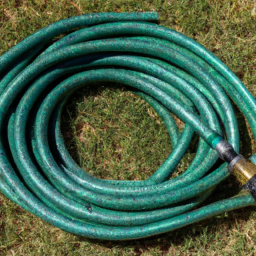Garden Hose Flow Rate How Many Gallons Per Hour
How Many Gallons Per Hour Is A Garden Hose
Understanding Garden Hose Water Flow Rate
The amount of water that flows from a garden hose depends on the size of the hose and the pressure of the water coming from the spigot into the hose. When it comes to choosing a garden hose, the size of the hose along with the pressure of the water will determine the amount of water you're able to get out of the hose.
Flow Rate Basics
Flow rate can be measured and expressed in gallons per hour (GPH) or liters per hour (LPH). GPH and LPH are the general measures of the amount of water that can be delivered in an hour. The higher the number, the more gallons of water are delivered in an hour while the lower the number means fewer gallons of water are delivered during an hour.
Determining Flow Rate for Garden Hoses
To determine the flow rate of a garden hose, you will need to consider both the pressure of the water that enters the hose as well as the diameter of the hose itself. The higher the pressure and the larger the diameter, the higher the flow rate will be. As an example, a normal garden hose with a 3/4 inch diameter and a pressure of 40 PSI has a flow rate of 23 GPH.
How Much Water Does A Standard Garden Hose Hold?
A standard garden hose typically holds around 5 gallons of water or more depending on the length of the hose. For example, a 50-foot hose that has a 3/4-inch diameter can hold up to 18 gallons of water while a 25 foot hose of the same size can hold up to 9 gallons of water.
Factors That Impact Flow Rate
Some of the factors that will influence the flow rate of a garden hose include the type of garden hose, the length of the hose, and the water pressure.
Type of Garden Hose
The most common types of garden hoses are light, medium, and heavy duty. Light-duty garden hoses typically have a smaller diameter and are less durable than medium-duty and heavy-duty hoses. As such, these smaller-diameter hoses typically provide a lower flow rate than heavier duty hoses.
Length of Hose
Garden hoses come in different lengths, ranging from 25 feet to 100 feet in length. The longer a garden hose is, the lower its flow rate will typically be, meaning that water pressure is also reduced as the hose length increases.
Water Pressure
Water pressure is a big factor in determining the flow rate of a garden hose. The higher the water pressure is, the higher the flow rate will be. For a garden hose to function properly, ensure that the water pressure coming into the hose is between 40 PSI and 80 PSI.
In Summary
Determining the flow rate of a garden hose depends on numerous factors such as the length of the hose, the type of hose, and the water pressure. Generally speaking, the larger the diameter of the hose and the higher the water pressure, the higher the flow rate. A normal garden hose with a 3/4 inch diameter and a pressure of 40 PSI has a flow rate of 23 GPH while longer hoses typically have a lower flow rate due to decreased water pressure.
Overall, understanding the flow rate and water capacity of a garden hose is important for properly watering plants or cleaning outdoor surfaces. Choosing the right type and size of garden hose can help ensure that you get the water you need with minimal wasted water.

Previous Page
Next Page
